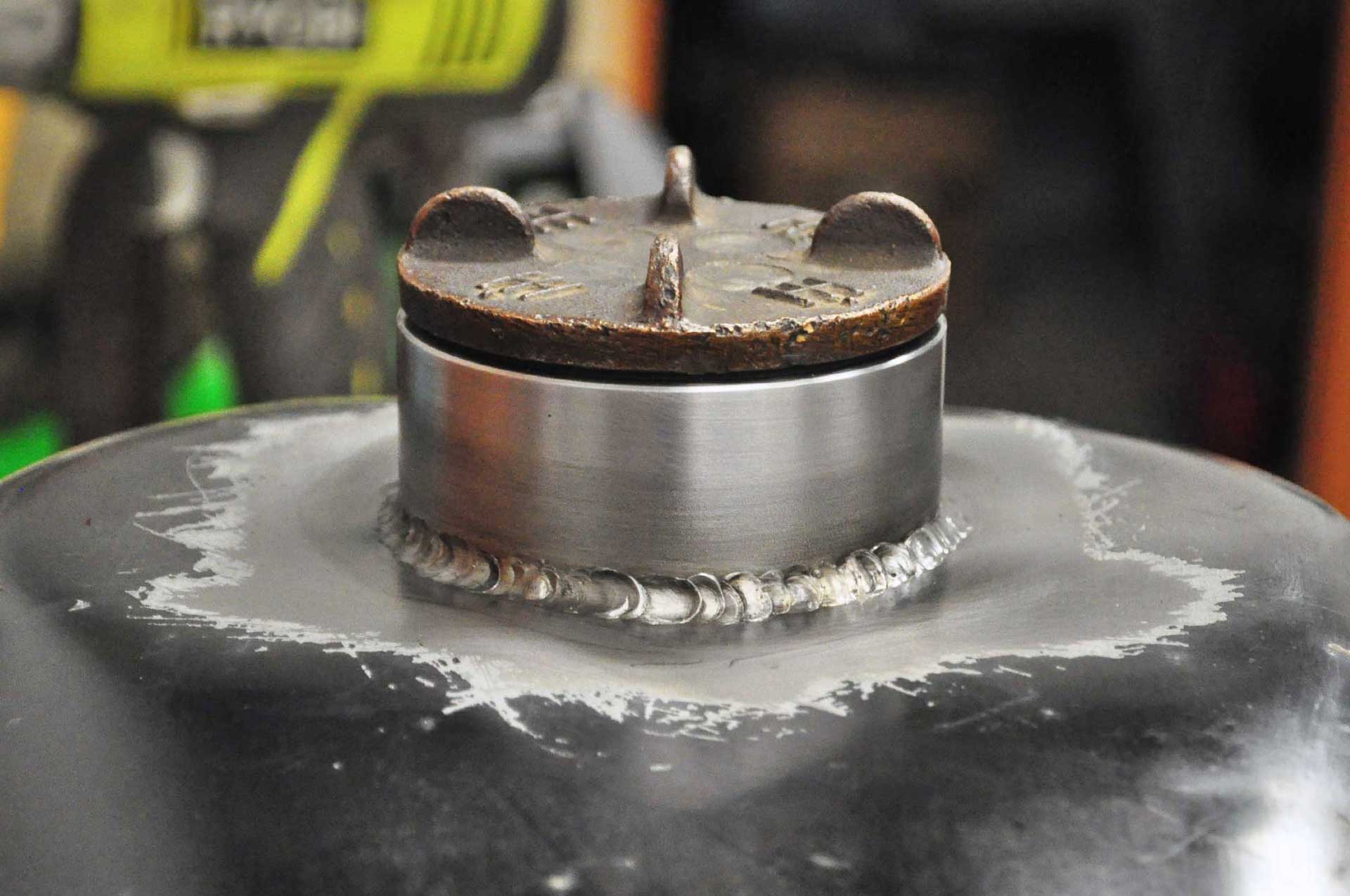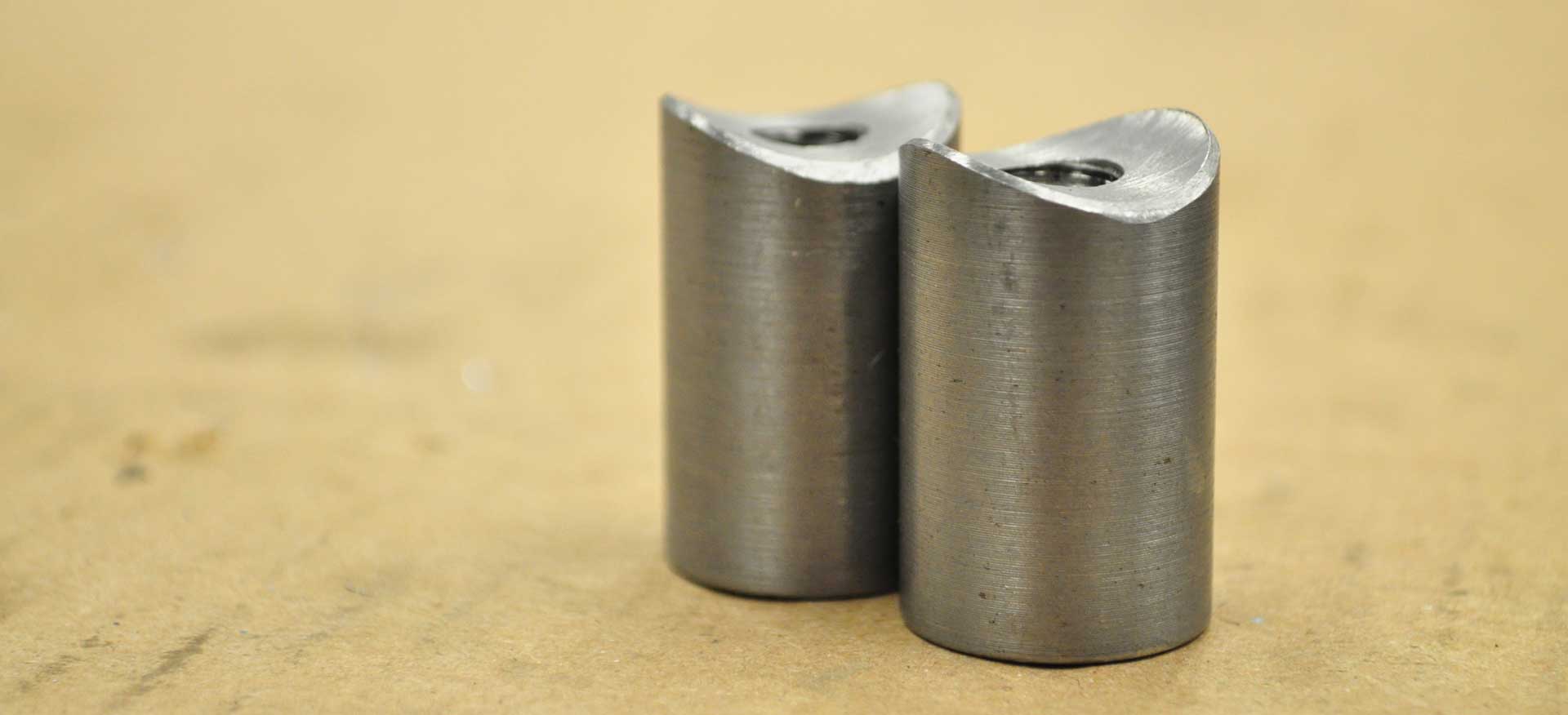Best Practices for Welding Threaded Bungs, Mounting Tabs, and Other Fittings
Posted by Damian Ercole on 10th Mar 2020
Best Practices for Welding Threaded Bungs, Mounting Tabs, and Other Fittings
Hey there all you DIY motorcycle builders and welders out there. Thanks for stopping by to read this post! First and foremost if you have immediate questions about a project or product please reach out to us by visiting the Contact Us page. We're open 9-5 EST M-F and we typically always answer the phone. Give us a call at (484)652-8010 or email us at sales@billetproofdesign.com.
Now that we've gotten that out of the way let's get back to the topic at hand: I’m writing this to educate you on best practices for welding your threaded bungs, mounting tabs, and fittings. At Billet Proof Designs we manufacture several weld-in fittings with internal threads, most of which are made from 1018 cold-rolled steel (CRS). We make them right here in our shop using US-made alloys. Here’s a little education on thread types before we get down to the nitty gritty.

Some of our threaded bungs contain internal SAE (Society of Automotive Engineers) and some are NPT (National Pipe Thread). An SAE thread is a straight American size thread with a specific thread pitch. For example, a ¼”-20 male fastener has a ¼” diameter with a thread pitch of 20 threads per 1” of thread. Unlike an SAE thread, a NPT thread is a tapered thread. The nominal size of the thread does not correspond to any measurement on the actual fitting or part.
The size of the pipe thread relates to the size of the internal diameter of the pipe. For example ¼” NPT thread does not measure ¼” anywhere. Furthermore, a male NPT threaded part/fitting will not thread into a female fitting like a straight thread would. Depending upon the size of the NPT thread, the fitting may only hand thread into another fitting a couple turns or so until it stops. This is how NPT fittings make a seal once threaded together with thread sealant and a wrench.
We get questions from customers about threaded bungs and how their bolt or part will not thread after the fitting is welded. There is a simple explanation for this; if too much heat is applied to the fitting it will shrink. When you heat metal during the welding process it expands. When it cools it shrinks. If you put too much heat in to the part, it can shrink so that the fastener will no longer thread into the fitting. When this happens, the threads need to be chased with a tap to cut a little material away; thus allowing the female counterpart to thread.
With NPT threaded fittings, we don’t cut the threads per the Machinery’s Handbook. We cut them a little deeper anticipating that the fitting is going to shrink a little during the welding process. If we were to cut the threads per The Handbook, we’d have way more calls from unhappy customers. Whenever I weld something that is threaded and the weld bead is close to the threads, I always make sure that I have the correct size tap to chase the hole just in case it happens to shrink.
Here are some personal tips that have always worked for me when welding any threaded bung or fitting, especially if the weld is very close to internal threads. If you have the ability to TIG-weld the part, TIG-weld the part! You have much more heat control with a TIG welder than with a MIG or stick welder. If you are using a TIG welder, choosing the correct amperage is important. Most of our NPT threaded fittings are welded onto a gas tank. This means you are welding a thicker part (fitting) to thinner material (sheet metal or your gas tank). Most gas tanks are constructed of 18ga steel. This equates to about 0.048” thick. A general rule of thumb for ferrous metals and up to about 1/8” thick, is to use 1 amp per 0.001” of material thickness.

In order to be a solid weld without leaks, enough amperage needs to be used in order to penetrate the fitting, which is thicker than the sheet metal you are welding. 48 amps just wouldn’t cut it in this scenario. I typically tack with about 75 amps and weld around 60 amps. When tacking, the majority of the heat is concentrated on the fitting. Three or four tacks are plenty for this situation. During welding, turn your machine down to 55-60 amps. Keep the heat focused on the fitting so not to blow out the sheet metal. Weld 90 degrees at a time allowing the metal to cool between welds. While the material is cooling, wire brush the weld with a stainless wire brush. DO NOT attempt to thread your part into the fitting while it’s hot. Ask me how I know this.
If you are MIG-welding your fittings, you need to be very conscious of your amperage setting and where you are focusing your heat. If I were MIG welding these fittings I would use the stacked tack method. Here you are placing a series of tacks overlapping one another with a short pause or break in between each tack. If you want to get really fussy, its best practice to wire brush in between tacks in order to limit the amount of inclusions or contaminates in weld. The longer the pause between tacks, the more time the metal has to cool, thus creating less shrinkage.
Welding threaded fittings is not the easiest process. As with anything else that requires skill, practice and experience will make you a better welder. If you are unsure of your ability, ask a friend or take it to a shop that has the experience and track record. If you do want to tackle this sort of job on your own, make sure you have the correct size tap on hand to chase the threads. If you have the means, purchase an extra fitting and make a practice weld on a scrap piece of sheet metal. You’ll be surprised at how much you learn just by doing it one time before the one that counts.
We don’t just sell parts at Billet Proof. We enjoy passing on the knowledge we have acquired through the years. Please reach out by visiting the contact us page with your questions or concerns. If you need fabrication or welding parts you can visit our Fabrication Parts section on our site!






